Getting the OTA balanced properly is one of the most important things you can do for an enjoyable evening of viewing. This goes along with my rule that everything must be transparent in operation. If I notice it, and especially if it annoys me, it must be corrected.
I have added enough stuff to my XT10 to qualify it as a telescope shop.
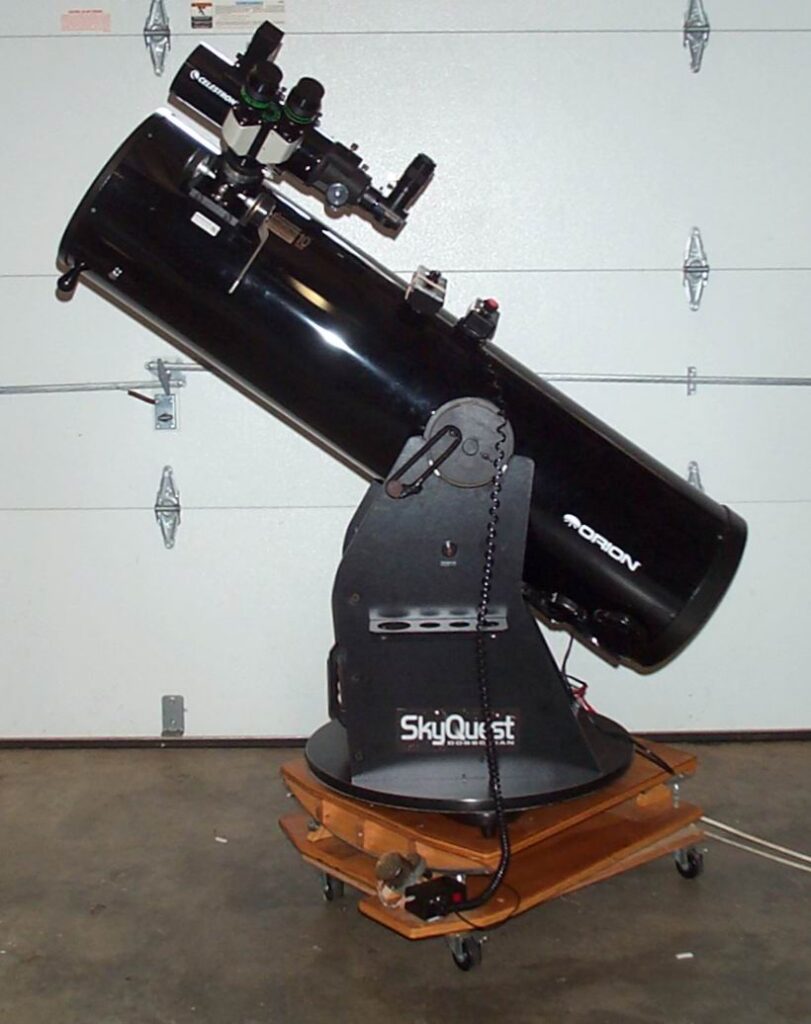
If you look closely, I have the 80mm refractor with a 32mm ep, the Rigel Quickfinder and the binoviewers with two Panoptic 24mm ep’s. All told, this weighs about 8 lbs. That is a lot of weight to have to balance. But even if you only have a stock 9×50 finder and a Telrad, you may have to address balance issues with the XT10.
The spring tension system should not be used to balance your OTA. I know there are different tension systems out there on the newer model XT series and some of the Guen Sheng dobs as well. But in all cases, you should properly balance the OTA first and then add tension as required to keep the OTA from moving when you swap out eyepieces or as the OTA approaches zenith.
For the metal tube dobs, we have a unique option available to us for balancing the OTA: magnets. A great source for magnets are speaker magnets. I got them on the cheap from Parts Express. Do not get the 42 oz version. It is too heavy to hold itself on the OTA. I wrap these magnets in black duct tape and stick them to the OTA. You could also attach felt or something else a little more elegant to the magnets to prevent them from scratching the OTA.
If you use more than one magnet, you’ll have to experiment with how to attach them. They are polarized and don’t get along very well in certain configurations. Getting 5 of them to play nicely together is no simple feat. You also need to ensure that the magnets will clear the sides of the rocker box when heading towards zenith.
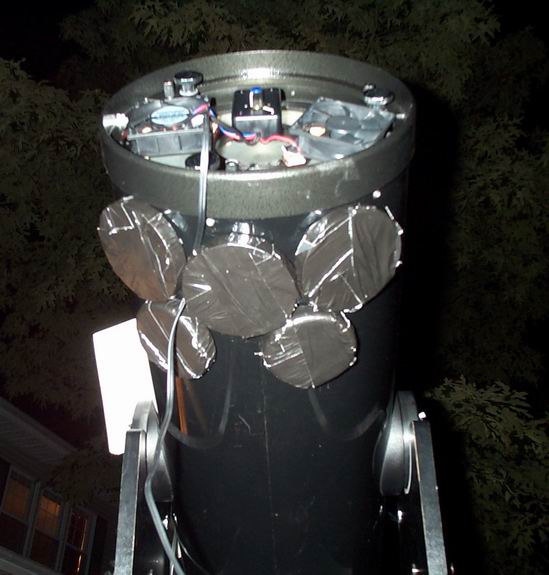
Always be sure to adjust the balance with the tensioning system disengaged. When placing the magnets, it is important to remember what you are balancing. Usually, you are trying to balance something you have added to the front and TOP of the OTA. This means you should balance that with something that is equal in weight and opposite in position. The equal in weight part is feasible, but the opposite in position part may not be. A 9×50 RACI finder sticks up a good 6 inches or so and placing a magnet on the opposite end, 6″ away from the OTA is not a good idea. You won’t be able to get your OTA to vertical.
This will create an OTA that is balanced along the horizontal axis, but not along the vertical axis. This imbalance will manifest itself when the OTA gets near vertical. When the OTA nears zenith, it will tend to keep going until it is vertical. This is one case where adding more friction may be the only way to prevent this from happening.
I have made other modifications to my XT10 that allow me to balance the OTA with all that stuff on there.
I modified the position of the altitude hubs by sliding them up on the OTA. In order to do this, I modified the holes that hold the altitude hubs on. I used a Dremel tool to make the holes into elongated slits. This allowed me to slide the altitude hubs forward to adjust the balance point of the OTA.
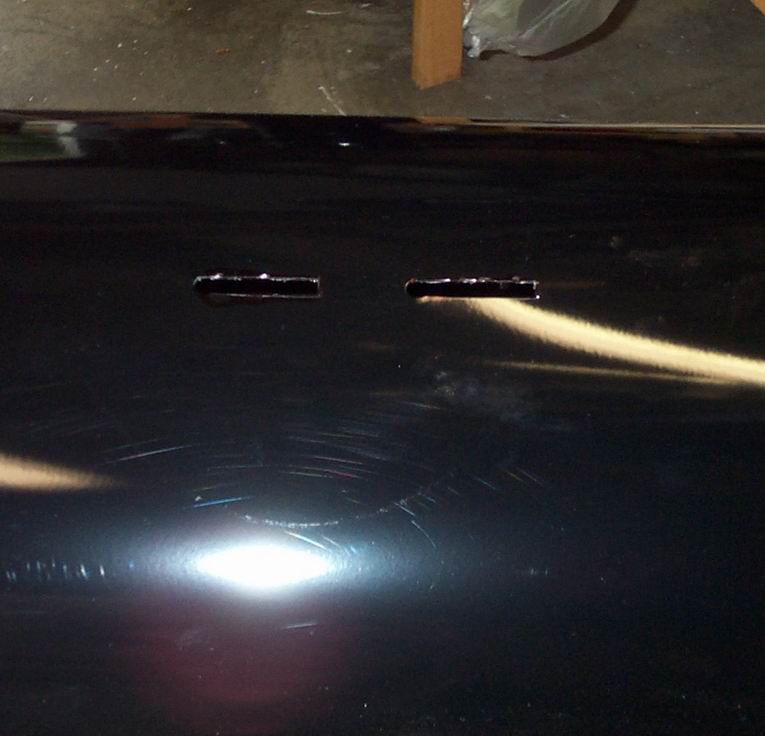
My grand plan was to slide the hubs far enough forward to balance the OTA without using magnets. I soon figured out that you can only move the hubs forward 5/8″. As you slide the hubs forward, the bottom of the OTA gets closer to the bolt that holds the rocker box to the baseboard. You know the one. The big bolt with a nut on top in the middle of the rocker box around which the whole telescope rotates. Oh well, that 5/8″ probably saved me 3 or 4 lbs on the back end.
The other thing I did was to put the bolts that hold the altitude hubs back on backwards and then put a wingnut on the end instead of a hex nut.
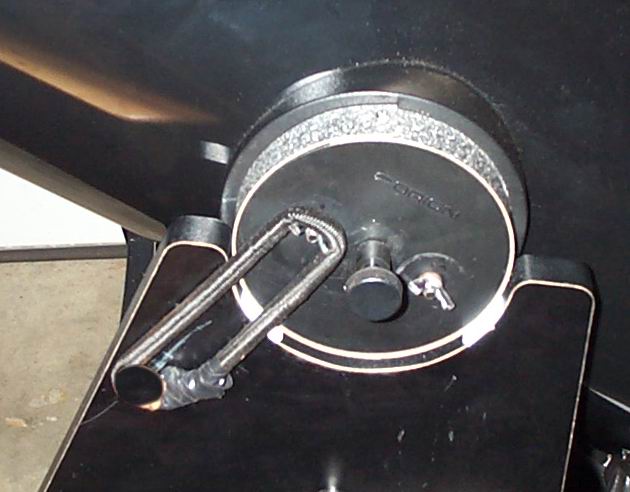
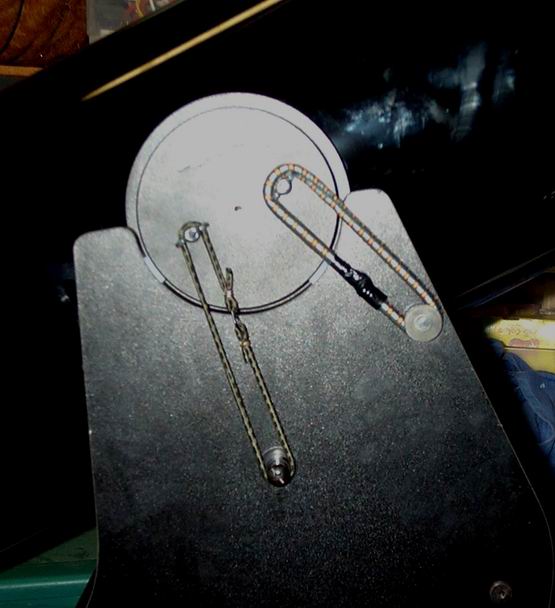
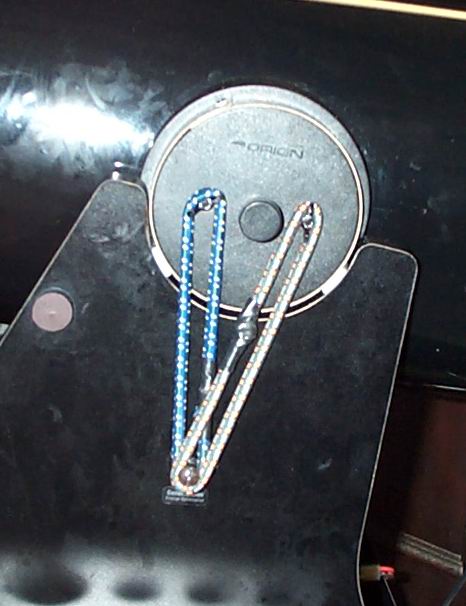
This allowed me to attach my bungees at different spots. This gave me the option of using a pull-pull system with the bungees. I also added an additional attach point on the forward part of the side of the rocker box. This is the one I’m using in the far left hand photo. This offers more pull without adding a lot of friction.
As you can see from the above photos, I have a lot of configuration options. I have tried them all. My current configuration is the one shown on the far left photo. One bungee only on the left side of the rocker box. This one bungee’s sole purpose is to balance the OTA when it gets near vertical. That’s it. Magnets do all the rest of the balancing.
I have my system balanced for the configuration shown in the first photo on this page: ST80, Rigel, binoviewers, 2 x 24 Panoptics and a 32mm ep in the ST80. I can swap ep’s in the binoviewer one at a time and it will stay balanced in all OTA positions. If I remove the binoviewers, the OTA will go vertical until the bungee kicks in and stops it about 45 degrees nose up. This is a problem that I haven’t solved yet. I want to devise a locking system so that when I take the binoviewers out, I can lock the elevation of the OTA and then make the swap. I have tried several possibilities, but none of them have worked. Since I don’t swap the binoviewers out a lot, I am not too concerned about this problem.
